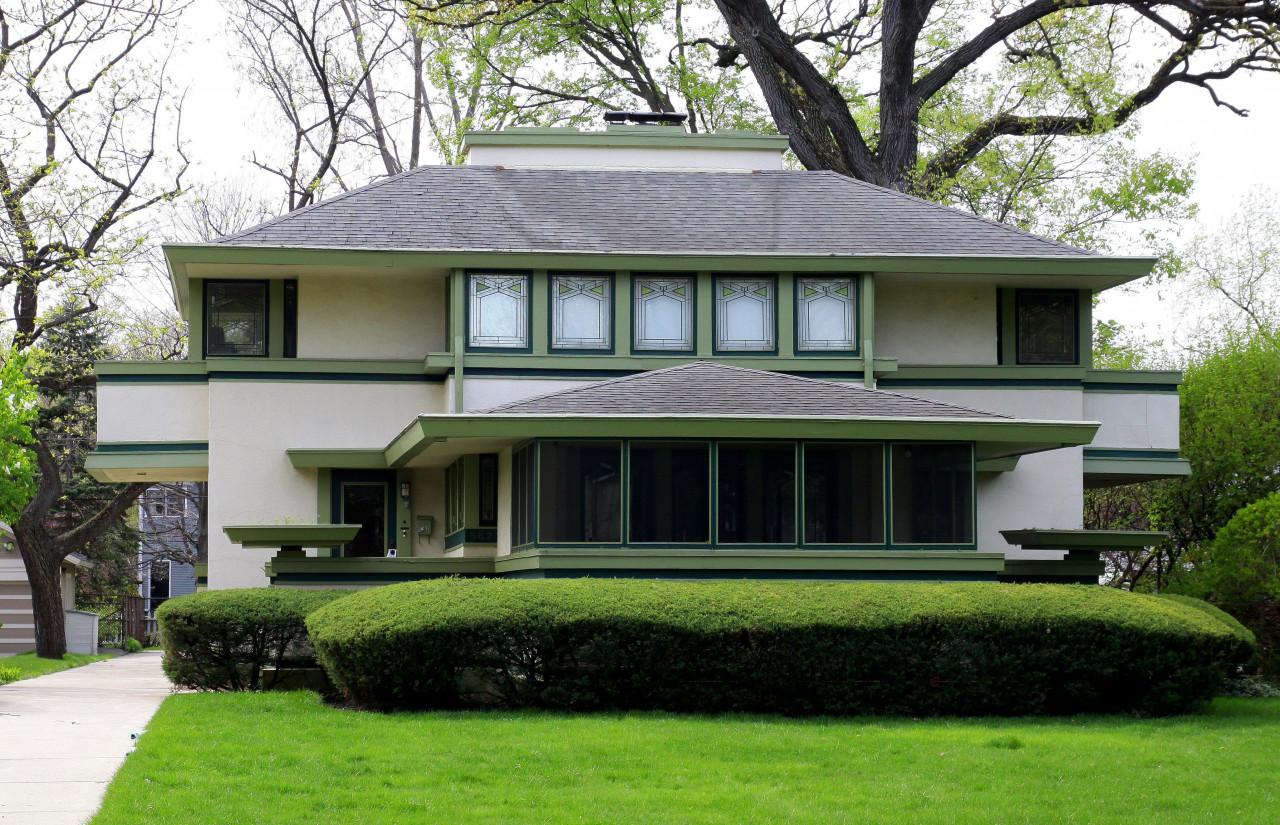#9711. Harmonious Prairie Style House Façade: Classic Horizontal Lines and Green Accents
This is an excellent example of a Prairie style house, an architectural movement developed by Frank Lloyd Wright in the early 20th century. The building demonstrates all the classic characteristics of this style: horizontal lines emphasized by wide roof overhangs, ribbon windows, and an overall low-slung form that seems to grow from the earth.
The façade of the house features a symmetrical composition with a central entrance accentuated by a projecting canopy. Particularly expressive are the horizontal lines highlighted by green decorative elements that contrast with the white walls. The second-floor windows with geometric stained glass patterns are typical of the Prairie style and create a distinctive architectural accent.
The wide roof overhangs characteristic of this style are not only aesthetically pleasing but also functional – they protect the house from precipitation and direct sunlight. The lower tier of the house is visually separated from the upper one, emphasizing the horizontal articulation of the façade.
In modern residential construction, many techniques from this style can be borrowed: the use of contrasting horizontal elements to visually expand the building, a symmetrical façade composition, the harmonious integration of the house with the surrounding landscape (emphasized by neatly trimmed shrubs), as well as large windows that provide good illumination to the interior spaces.
